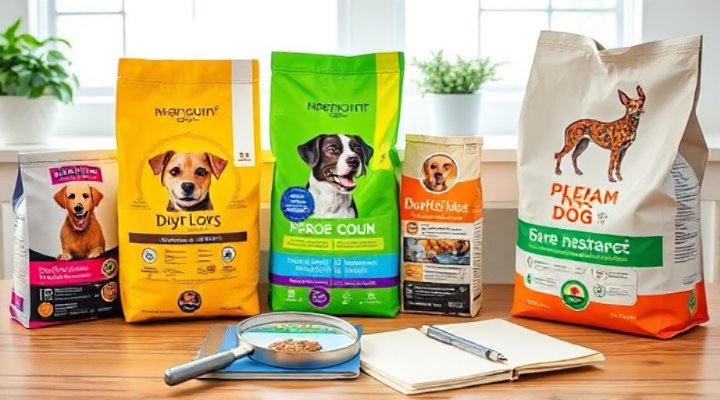When it comes to our furry friends, nothing is more important than their health and happiness. One of the key factors in ensuring both is choosing the best dog food brands available. But with so many options on the market, how do you know which one is right for your pet? In this comprehensive guide, we’ll walk you through everything you need to know about selecting the healthiest food for your dog.

Understanding Dog Nutrition Basics
Before diving into specific brands, it’s crucial to understand what makes a dog food nutritious. Dogs, like humans, require a balanced diet of proteins, fats, carbohydrates, vitamins, and minerals. However, their nutritional needs differ significantly from ours.
Protein should be the foundation of any quality dog food. Look for named animal proteins (like chicken, beef, or fish) as the first ingredient. Fats provide energy and support skin and coat health, while carbohydrates offer fiber and energy. According to the American Veterinary Medical Association, the right balance of these nutrients varies based on your dog’s age, size, and activity level.

Life Stage Nutrition
Puppies, adults, and senior dogs all have different nutritional requirements:
- Puppies need more protein and fat to support growth
- Adult dogs require balanced nutrition for maintenance
- Senior dogs often benefit from lower-calorie, joint-supporting formulas
For more information on training your puppy alongside proper nutrition, check out our guide on Dog Training for Beginners.

Top Dog Food Brands Reviewed
Now, let’s examine some of the best dog food brands available today, starting with a detailed look at Fromm.
Fromm Dog Food: A Closer Look
Fromm Family Foods has been producing premium pet food since 1904. Their recipes often feature:
- High-quality animal proteins
- Whole fruits and vegetables
- No artificial preservatives
- Probiotics for digestive health
Many pet owners report shinier coats and improved energy levels after switching to Fromm. However, it’s worth noting that some dogs with sensitive stomachs may need time to adjust to the rich formulas.
For dogs with specific dietary needs, you might also consider Royal Canin’s specialized formulas.

How to Transition Your Dog to New Food
When switching to one of the best dog food brands, it’s important to transition gradually to avoid digestive upset. Follow this schedule:
- Days 1-2: 25% new food mixed with 75% current food
- Days 3-4: 50% new food
- Days 5-6: 75% new food
- Day 7: 100% new food
If you notice any signs of digestive distress, slow the transition process. For more tips on managing your dog’s behavior during dietary changes, see our article on How to Train a Dog to Stop Barking.

Special Considerations
Breed-Specific Needs
Different breeds may benefit from specialized formulas:
- Small breeds often need smaller kibble sizes
- Large breeds may require joint support
- Active working dogs need higher calorie content
Food Allergies and Sensitivities
If your dog shows signs of food allergies (itchy skin, ear infections, digestive issues), consider limited-ingredient diets or novel protein sources like duck or venison.
Remember, the best dog food brands are those that keep your individual pet healthy and happy. Don’t hesitate to consult with your veterinarian about your dog’s specific nutritional needs.
For more information on pet nutrition, visit the FDA’s pet food guidelines.
Final Thoughts
Choosing the right food for your dog is one of the most important decisions you’ll make as a pet owner. By understanding your dog’s nutritional needs, researching the best dog food brands, and monitoring your pet’s response to new foods, you can ensure they live a long, healthy life full of tail wags and happy moments.
Related keywords: best dog food brands, Fromm dog food reviews, healthy dog food options, premium dog food comparison, dog nutrition guide
